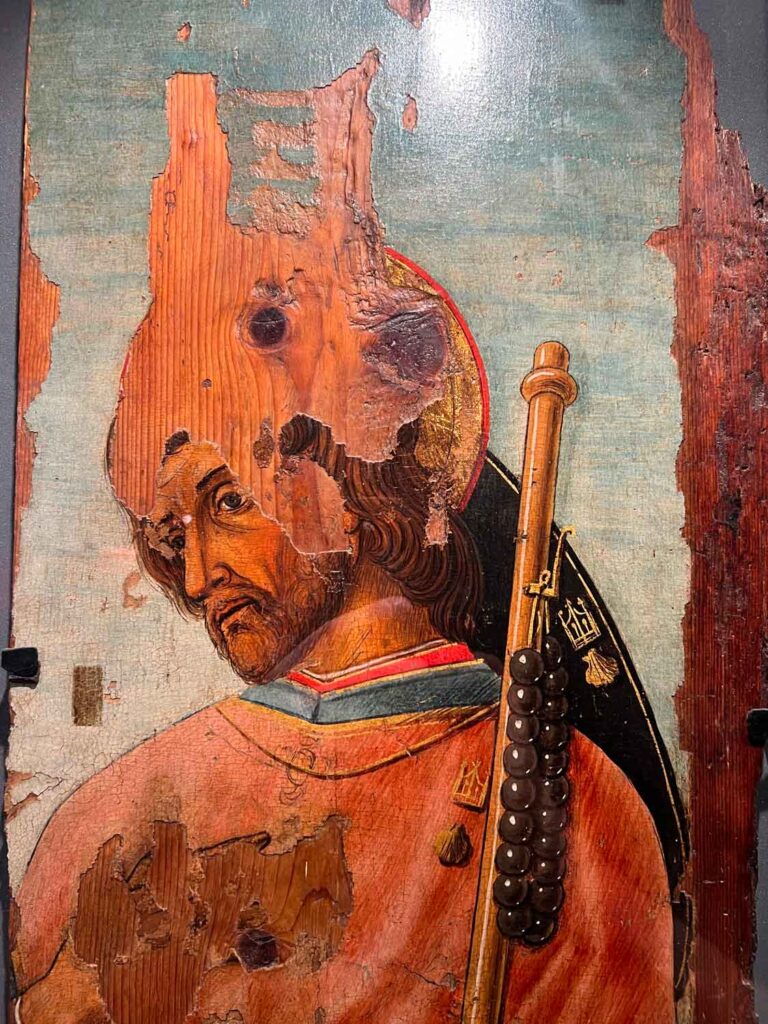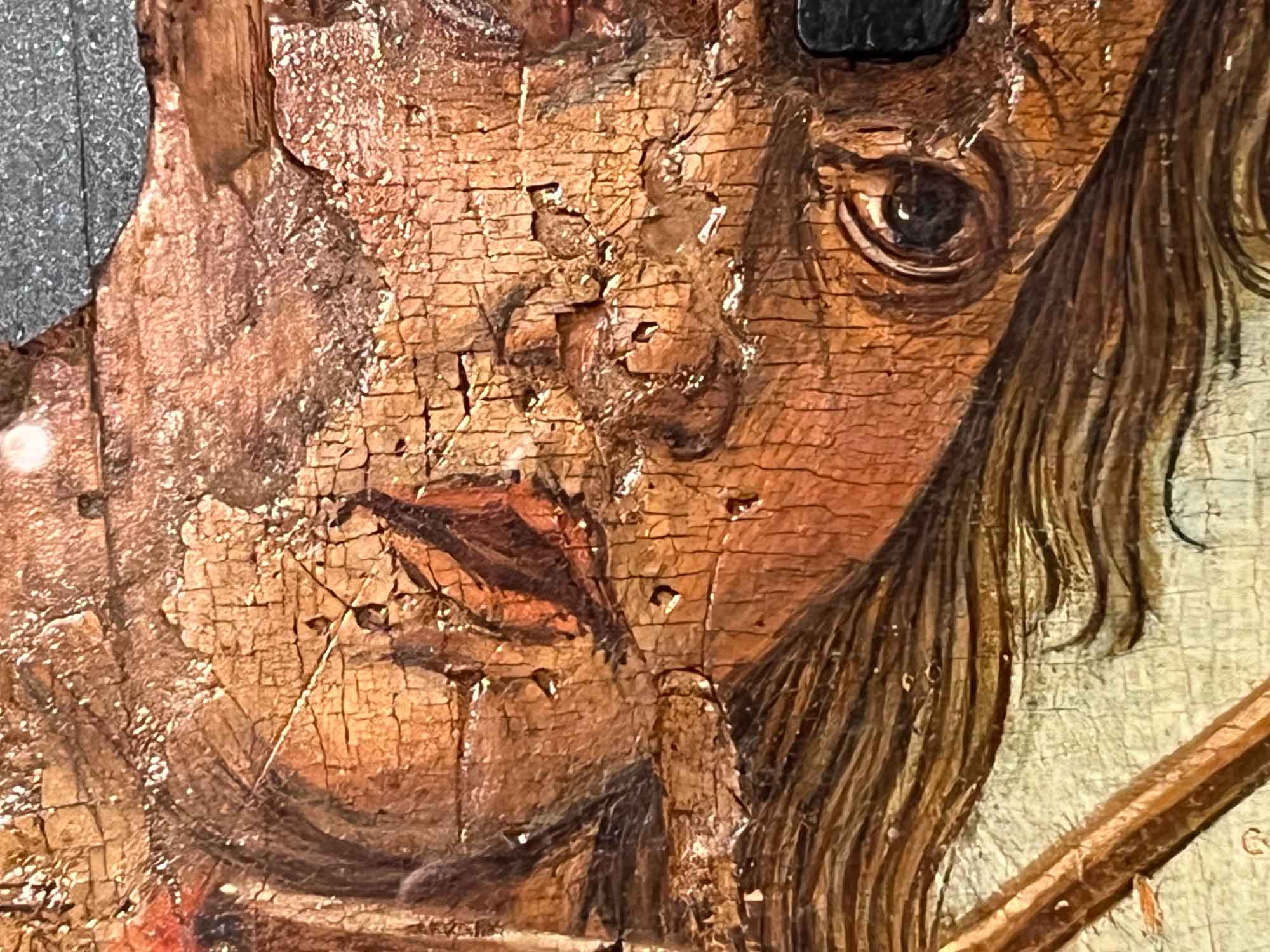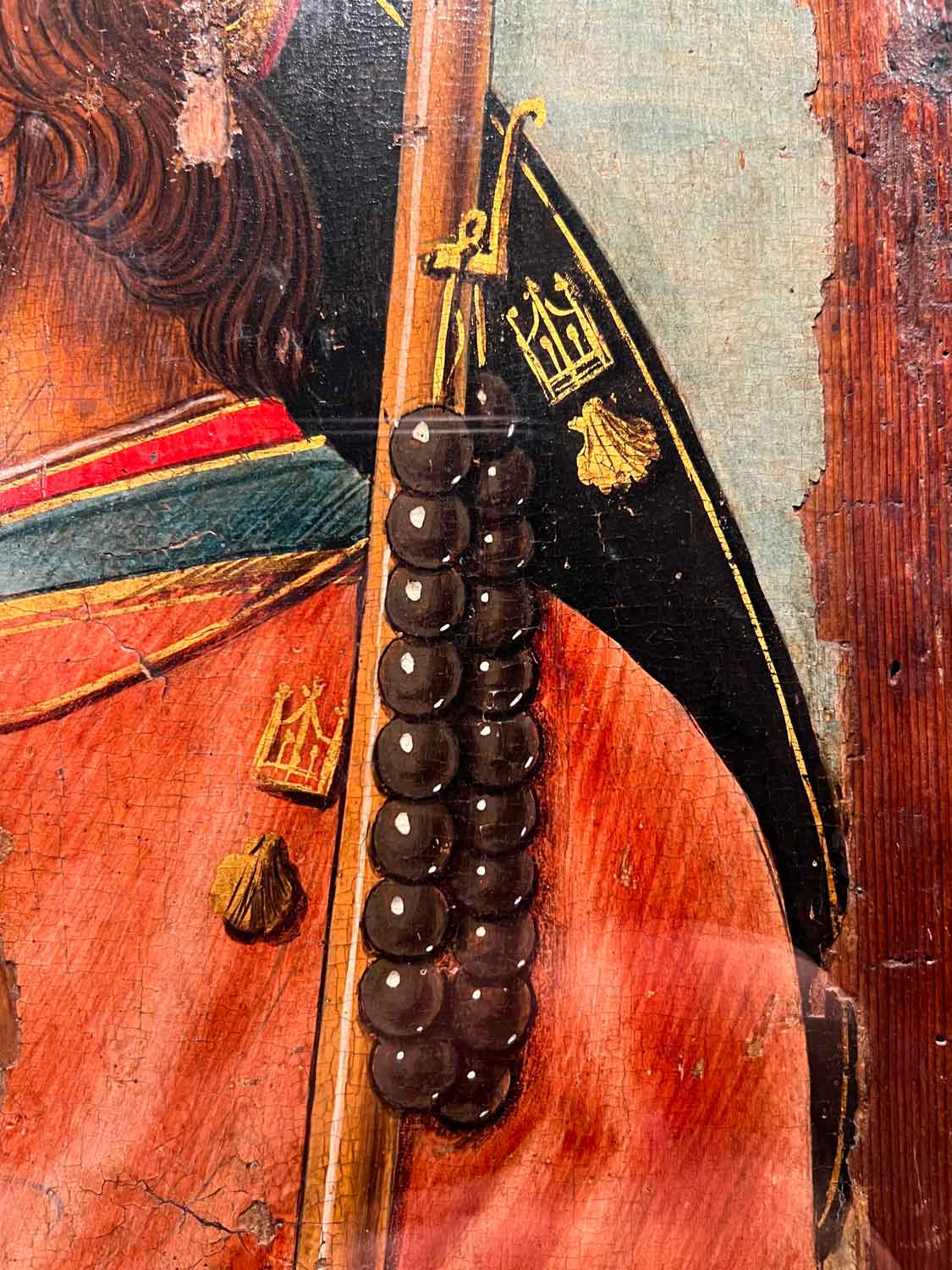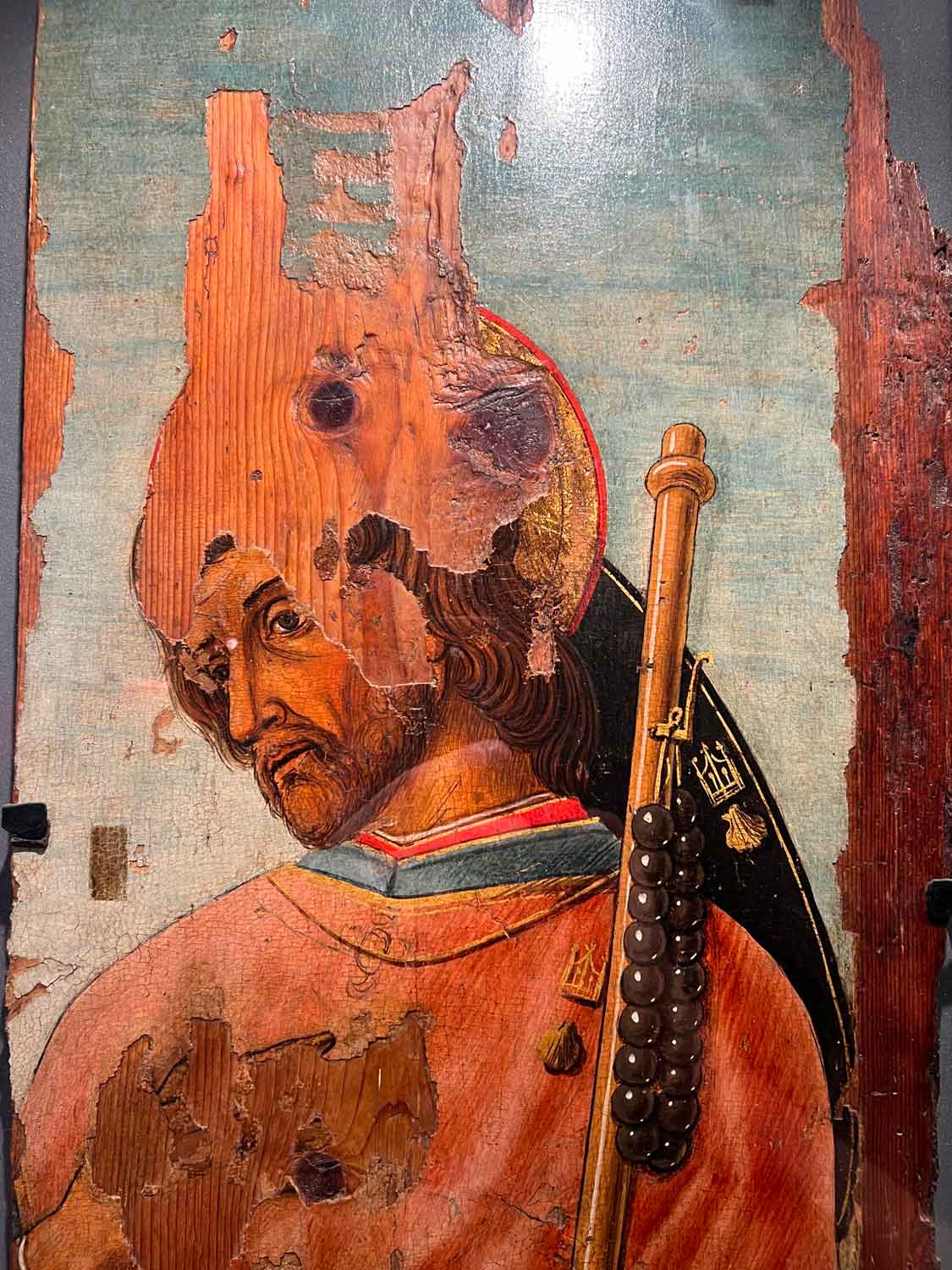Saint Roch and Saint Sebastian — Grottammare
The Sistine Museum in Grottammare houses two panels painted by Vittore Crivelli. They are quite incomplete, as they were discovered in 1968 by Alberto Rossi during restoration work on the church of San Giovanni, where the two works had been reused as supports for the roof tiles of the building.
One depicts Saint Roch, dressed as a pilgrim with a wide-brimmed hat, holding a staff in one hand and showing the wound on his thigh with the other. The second panel depicts Saint Sebastian, tied to a tree trunk while being martyred by numerous arrows piercing his naked body.
Both panels feature a blue background reminiscent of a clear, peaceful sky; at the base, especially in the panel depicting Saint Sebastian, there is visible vegetation.
The two panels underwent restoration after their discovery, carried out by the restorer Martino Oberto.
The exact provenance of these works is unknown. It has been hypothesised that the two saints were part of a grandiose polyptych composed of 14 panels from the Venetian school, created for the church of Sant'Agostino in Grottammare, as reported by Giambernardino Mascaretti in 1841. More recently, in 2003, Stefano Papetti suggested that the two panels may instead have been the doors of a small sacred shrine.
Vittore Crivelli
san Rocco e san Sebastiano - due tavole
Provenienza: Grottammare, chiesa di San Giovanni
Tempera su tavola, 128 x 40 cm
Chiesa di San Giovanni Battista, Musei Sistini diGrottammare
Piazza F. Peretti GROTTAMMARE (AP)
Saint Roch and Saint Sebastian — Grottammare
The Sistine Museum in Grottammare houses two panels painted by Vittore Crivelli. They are quite incomplete, as they were discovered in 1968 by Alberto Rossi during restoration work on the church of San Giovanni, where the two works had been reused as supports for the roof tiles of the building.
One depicts Saint Roch, dressed as a pilgrim with a wide-brimmed hat, holding a staff in one hand and showing the wound on his thigh with the other. The second panel depicts Saint Sebastian, tied to a tree trunk while being martyred by numerous arrows piercing his naked body.
Both panels feature a blue background reminiscent of a clear, peaceful sky; at the base, especially in the panel depicting Saint Sebastian, there is visible vegetation.
The two panels underwent restoration after their discovery, carried out by the restorer Martino Oberto.
The exact provenance of these works is unknown. It has been hypothesised that the two saints were part of a grandiose polyptych composed of 14 panels from the Venetian school, created for the church of Sant'Agostino in Grottammare, as reported by Giambernardino Mascaretti in 1841. More recently, in 2003, Stefano Papetti suggested that the two panels may instead have been the doors of a small sacred shrine.





